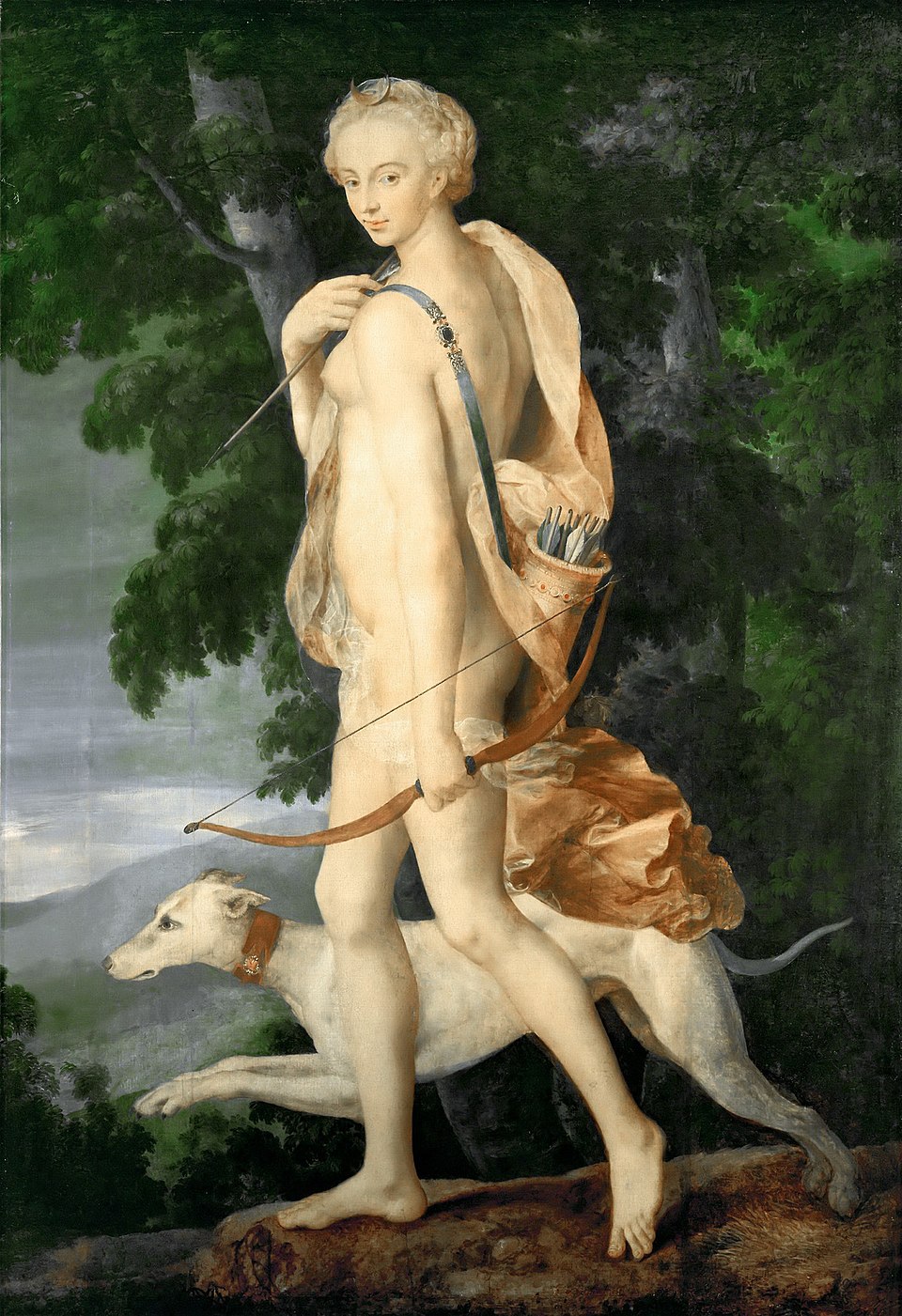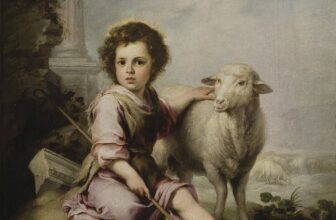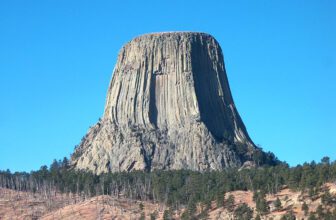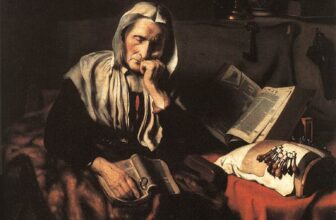
Diana the Huntress: Myth, Majesty, and the Art of the Fontainebleau School
In the quiet halls of the Château de Fontainebleau, nestled in the French countryside not far from Paris, one can step into a world where gods and goddesses still roam. Amid the Renaissance splendor of frescoed ceilings, grand galleries, and gilded ornamentation, a painting stands out, not merely for its beauty but for the legend it invokes. It is the image of Diana the Huntress, a striking portrayal of a mythological goddess immortalized by the School of Fontainebleau in the mid-16th century.
But who was Diana, and why did she captivate the artists of this lavish French court? To understand the power and presence of this painting, one must first journey into ancient mythology, where Diana roamed forests under moonlight, guided by instinct, independence, and divine authority.
Diana, known to the Greeks as Artemis, was the goddess of the hunt, the moon, and nature. She was one of the twelve Olympians and the twin sister of Apollo, born to Zeus and the Titaness Leto. While Apollo reigned over light and music, Diana was a guardian of the wilderness, protector of animals, and a fierce symbol of chastity and feminine power.
From her earliest stories, Diana was not a goddess to be trifled with. She was swift and solitary, often seen traversing the forests with her band of nymphs, bow slung over her shoulder, a quiver full of arrows on her back. Her connection to animals, especially deer, was profound. She could be both nurturer and destroyer, embodying the paradox of nature itself.
One of the most famous myths involving Diana is the tale of Actaeon, a mortal hunter who accidentally stumbled upon the goddess as she bathed in a secluded forest spring. Offended by his gaze, and protective of her chastity, Diana turned him into a stag. His own hounds, unable to recognize their master, tore him apart. This chilling tale highlights Diana’s power and her commitment to preserving her purity and independence.
Other stories reinforce her role as protector of women, especially in childbirth, and as a punisher of those who violate natural law or divine boundaries. She was revered and feared, worshipped in sacred groves and temples, and her symbolism endured long after the decline of ancient religions.
What Was Diana the Goddess Of?
Diana’s domain was vast and varied. She held dominion over:
The Hunt: With her bow and arrows, Diana represented the skill, discipline, and primal thrill of hunting. She was often invoked by hunters for success and safety in the woods.
Wild Animals and Nature: Diana’s identity was intertwined with the wilderness. She symbolized untamed nature, the freedom of the forest, and the mystique of the animal kingdom.
The Moon: As the Roman counterpart to Artemis, Diana became increasingly associated with the moon. Her glowing presence in the night sky linked her to the rhythms of life, tides, and mystery.
Chastity and Virginity: Perhaps one of her most defining attributes was her eternal virginity. Diana embodied a kind of feminine autonomy, resisting male domination and choosing a life of independence.
Childbirth and Women: Paradoxically, though a virgin, Diana was also associated with childbirth. She was often invoked by women in labor, offering protection and ease.
This multifaceted identity made Diana not only one of the most powerful Roman deities but also one of the most enigmatic, an icon of both purity and primal power.
Diana the Huntress in the Eyes of the Renaissance
Fast forward from ancient Rome to 16th-century France, and Diana appears again, not in the sacred groves of mythology, but on the frescoed walls and painted panels of royal residences. During the reign of King Francis I, the French court underwent a cultural transformation. Inspired by Italian Renaissance art, literature, and philosophy, Francis invited artists, architects, and thinkers from Italy to France, giving rise to the School of Fontainebleau.
This artistic movement, centered around the Château de Fontainebleau, sought to merge classical mythology with the elegance of French aesthetics. The result was a series of grand mythological works that celebrated sensuality, symbolism, and allegory. Among them, none was more commanding, or more alluring, than “Diana the Huntress.”
The School of Fontainebleau’s Diana the Huntress
The painting of Diana the Huntress, attributed to an anonymous artist of the School of Fontainebleau, is a masterpiece of Renaissance elegance and classical homage. Often dated around 1550, the work portrays the goddess as a powerful, athletic woman, partially nude, accompanied by her signature hunting dogs and set against a serene forest backdrop.
She is depicted in motion, reaching for an arrow or perhaps mid-hunt, yet her posture is both graceful and commanding. Her gaze is focused, her features idealized yet expressive. The natural setting, softened by the painter’s hand, enhances the balance between ferocity and femininity.
A curious detail lies in the model for the goddess, many art historians believe the face and form of Diana were inspired by Diane de Poitiers, the mistress of King Henry II of France. Diane, like her mythological namesake, was known for her beauty, intelligence, and independence. She even adopted the symbol of Diana, aligning herself with the goddess’s image to assert her influence in a male-dominated court.
In the Fontainebleau version, Diana isn’t just a deity, she’s an icon of feminine power, sensual yet unattainable, natural yet divine. This portrayal both reflects and challenges the Renaissance ideals of womanhood, showing Diana not as a passive muse but an active force of nature.
A Story in Paint and Symbol
The painting does more than depict a myth, it tells a story layered with meaning. It reflects:
The merging of pagan and Renaissance ideals: By using classical myth to express contemporary beauty and power, the School of Fontainebleau brought ancient stories to new life.
Allegory of royal authority: Diana’s control over nature and animals mirrors the king’s desire for control over his domain.
Celebration of feminine power: At a time when women’s roles were highly restricted, Diana represented an ideal of strength, intellect, and autonomy.
Indeed, for the court of Francis I and later Henry II, Diana was more than myth, she was muse, metaphor, and mirror.
Legacy and Cultural Impact
The story of Diana has endured for centuries not just through mythology but through art, literature, ballet, and film. From Roman temples to Renaissance palaces, from Baroque tapestries to neoclassical sculpture, Diana remains a symbol of wildness, purity, and power.
Her image was a favorite of Louis XIV, who used the iconography of Diana to represent the French monarchy’s divine right and the king’s connection to celestial order. Later, in the 18th and 19th centuries, artists and writers continued to explore Diana’s allure, sometimes romanticizing her chastity, other times admiring her defiance.
In modern times, Diana has become an emblem of female empowerment and eco-consciousness. Her story resonates with those who seek freedom from societal constraints, who value the natural world, and who find strength in independence.
A Goddess Reborn in Paint
To stand before the painting of Diana the Huntress at Fontainebleau is to witness the timeless dialogue between myth and meaning. It is to see a goddess not frozen in time, but brought vividly to life through brush, canvas, and cultural memory.
She is not just a figure from an old story. She is a presence, alert, proud, and forever moving through the forests of our imagination.
In her we find the wildness we’ve forgotten, the beauty that defies convention, and the enduring power of myth to shape art, history, and identity.
Diana, with her bow and her moonlit crown, still hunts, not beasts, but truths.
And we, centuries later, still follow her trail.




